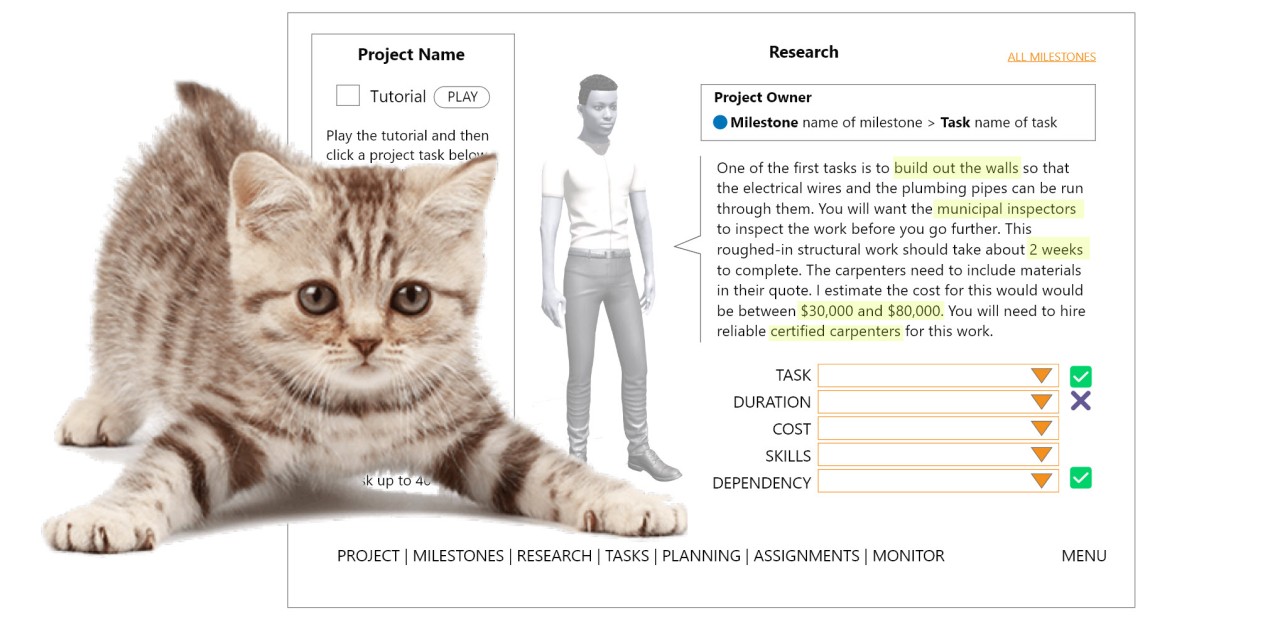
Confessions of a Project Manager or Secrets to Project Management?
Confessions of a Project Manager or Secrets to Project Management?
I’m not sure which title is better, so I'm going with both :-)
I’m sharing my experience about how I have successfully managed hundreds of projects— software apps, simulations, board games, toys, books, video production, packaging, marketing, art, live events, and more.
30 years. Hundreds of projects.
The projects were for small businesses, nonprofits, government agencies, schools, Fortune 500 clients, and for our own internal operations, product development, and sales initiatives.
Some projects were high stakes, some were low stakes, and many were in between.
All Successful?
I believe it's fair to say the projects I led were all successful because they were completed as designed.
But not always as planned.
And not all were commercially successful — because selling is often much harder than making.
I’ve never missed a client deadline, but I have missed our own internal deadlines.
And I have never charged a client one cent more than expected.
How is that possible?
If you have experience with project management, you may be skeptical about my claims. Because you know that project management can be really difficult and unpredictable— particularly if you don’t have direct control over resources and budget. Success is never guaranteed.
I once read an amusing and insightful comment about project management— it said that anyone who believes in global conspiracy theories has never had to manage a project with more than 5 people involved.
So true— herding cats comes to mind.
 No cats were injured in the making of this gif
No cats were injured in the making of this gif
I did have a few things working in my favor.
First, the projects were small or medium-sized, not huge. This allowed me to remain in the thick of things.
Second, I had both responsibility and authority. Many project managers are responsible for the success of a project but do not have the authority to make leadership decisions about the project. This puts them in a difficult position.
Third, I have domain experience in most of the projects I have worked on. This made it possible for me to make reasonable time and cost estimates and to make design and project decisions quickly without having to consult with too many others.
If you can work on projects that match your domain experience, you will find it much easier to be successful. If you cannot, start by doing research and then try to find trusted coworkers and advisors that you can lean on.
My Approach and Process
Here’s the approach and process that I follow — not ordered in any particular sequence.
- Gain a complete understanding of the project. Document the needs and risks before costing the project. I'm talking about serious risks that could create delays, cost overruns, or require alternative solutions. You need to get those figured out sooner rather than later.
- Know what success means. Every project has a reason for being done. If you have a clear understanding of the purpose and desired outcome, you'll be able to make decisions that align with achieving that outcome.
- Documentation. Plan the project on paper so there is a clear understanding of where you are going — text, graphics, illustration, storyboards. When it's not possible to have everything fully specified up front, keep iterating as you go. 4.** Explicitly state what the project will not include.** Eliminate any ambiguity. This is particularly important for managing client expectations. "I thought the project also included ..." is a phrase that signals the potential death of a relationship. Make sure it never happens.
- The project schedule should expect review delays. Clients almost always take longer to review and sign off on milestones than they plan. Your plan and promised delivery schedule should account for delays like this.
- Ask the right questions. When working with team members or clients to work out tasks and objectives, ask the right questions to get to the root of the issue. If you don't have a clear picture, you haven't asked enough of the right questions. BTW, asking the right questions is a deep skill in and of itself.
- "I will take your money if you want, but ..." — this is what I often tell clients when they request something that is time-consuming or expensive but does not help them achieve their project objectives. Do what's right for the project.
- Find the shortest path to success. I love cutting corners on projects when it saves time and money — for my team and the client. The key is to cut corners that have no implications on the success of the project. Always look for a better way to achieve the same outcome.
- Assign the right people to the right task. Know your team members' individual skills, strengths, and weaknesses. Provide support where needed.
- Avoid meetings unless necessary. Meetings break workflow, slow down progress, and cost money. A one-hour meeting with 5 people burns more than 5 hours of time. Only meet when necessary and only invite people who need to be there.
- I don't charge for our learning curve. If my team has not done something before, we don't charge our clients for our training. That expense is an investment in our own skills. (I also make sure the client is aware of what we have experience in and what we do not, as I don't do "fake it until you make it.")
- Clear bottlenecks. Projects often stall waiting for someone to make a decision. Don't be that bottleneck and help make sure that other teammates and the client are not that bottleneck.
- Communicate but don't overwhelm. Give everyone access to detailed project information but only include them in tasks and updates that are relevant to their work — otherwise important things will get lost in the noise.
- Micromanage when you need to micromanage. Delegating, of course, is critical — but so is knowing that things are getting done properly. I don't need to be in control of every task, but I need to know that every task is under control. Sometimes that requires rolling up my sleeves and taking a deep dive to get things back on track.
- Revisit priorities. Review project progress frequently and reorganize priorities as needed. And make sure everyone knows what is important and what is not.
- Be Kind. Projects don't do themselves. You need people. Be the person that reduces stress, not causes it.
I'm sure I've missed something, but let's move on to tools.
Tools
- Project Communication— if you are still using email for project communication, stop. That’s crazy inefficient. I’ve been a faithful user of *Basecamp*since the early days. There are many choices nowadays.
- Chat— we use Google Chat but there are many other apps that you can use.
- Time Tracking— we built our own app and you can use it too at TimeSpark.me
- Documentation— Google Workspace, Office 365, Coda, etc. Use online apps for easy collaboration and sharing, instead of offline documents.
- Specs and Storyboards— I’ve used docs, slides, hand drawings, and other systems. My current preference is Adobe XD.
- Feedback— I use screenshots with annotations and screen capture tools for this — like Techsmith Capture and Snagit.
- Personal Task Management— Workflowy. 8.** Project Management App*— as useful as these tools can be (*MS Project, etc), I've never had to use one. Maintaining these systems takes time so unless you are a full-time project manager, you can probably get by without them.
What's Next?
With all this experience, my team and I decided that we should help others learn how to manage projects, so that's what we are doing as I write this (June 2023).
What is the best way to learn Project Management?
Learning how to manage a project is like learning to ride a bike — you have to actually do it to get good at it.
Teaching project management is equally as difficult because when you have dozens of students doing project management activities, you end up spending a lot of time reviewing and assessing practice projects and providing technical support (how to use Microsoft Project, Excel, etc).
So, my team and I decided to help by creating a realistic Project Management Simulation. The simulation puts you in the role of a project manager who has to manage a project from start to finish. The experience is realistic for the student and fully automated so instructors can sit back and watch the grades come in.
The header image of this article is a scene from our internal storyboard (minus the cat :-)
I'll share more about the new Project Management Simulation as we get closer to launch. Message me if you want to be added to our notification list.
Other tips?
If you have your own tips on how to successfully manage projects, please share them in the comments below.
UPDATE Dec 2023 — The GoVenture Project Management simulation is now available at GoVenture.net/pm
Receive this newsletter by email —
I'm Mathew Georghiou and I write about how games are transforming education and learning. I also share my experience as an entrepreneur inventing products and designing educational resources used by millions around the world. More about me at Georghiou.com